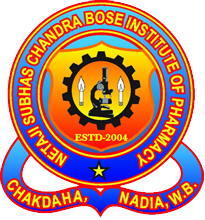 Detailed Stages of Drug Development
Detailed Stages of Drug Development
1. Discovery
2. Product Characterization
3. Formulation, Delivery, Packaging Development
4. Pharmacokinetics And Drug Disposition
5. Preclinical Toxicology Testing And IND Application
6. Bioanalytical Testing
7. Clinical Trials
Discovery
Discovery often begins with target identification – choosing a biochemical mechanism involved in a disease condition. Drug candidates, discovered in academic and pharmaceutical/biotech research labs, are tested for their interaction with the drug target. Up to 5,000 to 10,000 molecules for each potential drug candidate are subjected to a rigorous screening process which can include functional genomics and/or proteomics as well as other screening methods. Once scientists confirm interaction with the drug target, they typically validate that target by checking for activity versus the disease condition for which the drug is being developed. After careful review, one or more lead compounds are chosen.
Product Characterization
When the candidate molecule shows promise as a therapeutic, it must be characterized—the molecule’s size, shape, strengths and weaknesses, preferred conditions for maintaining function, toxicity, bioactivity, and bioavailability must be determined. Early stage pharmacology studies help to characterize the underlying mechanism of action of the compound.
Formulation, Delivery, Packaging Development
Drug developers must devise a formulation that ensures the proper drug delivery parameters. It is critical to begin looking ahead to clinical trials at this phase of the drug development process. Drug formulation and delivery may be refined continuously until, and even after, the drug’s final approval. Scientists determine the drug’s stability—in the formulation itself, and for all the parameters involved with storage and shipment, such as heat, light, and time. The formulation must remain potent and sterile; and it must also remain safe (nontoxic).
Pharmacokinetics And Drug Disposition
Pharmacokinetic (PK) or ADME (Absorption/Distribution/Metabolism/Excretion) studies provide useful feedback for formulation scientists. PK studies yield parameters such as AUC (area under the curve), Cmax (maximum concentration of the drug in blood), and Tmax (time at which Cmax is reached). Later on, this data from animal PK studies is compared to data from early stage clinical trials to check the predictive power of animal models.
Preclinical Toxicology Testing And IND Application
Preclinical testing analyzes the bioactivity, safety, and efficacy of the formulated drug product. This testing is critical to a drug’s eventual success and, as such, is scrutinized by many regulatory entities. During the preclinical stage of the development process, plans for clinical trials and an Investigative New Drug (IND) application are prepared. Studies taking place during the preclinical stage should be designed to support the clinical studies that will follow.
Bioanalytical Testing
Bioanalytical laboratory work supports most of the other activities in the drug development process. The bioanalytical work is key to proper characterization of the molecule, assay development, developing optimal methods for cell culture or fermentation, determining process yields, and providing quality assurance and quality control for the entire development process. It is also critical for supporting preclinical toxicology/pharmacology testing and clinical trials.
Clinical Trials
Clinical studies are grouped according to their objective into three types or phases:
Phase I Clinical Development (Human Pharmacology) – Thirty days after a biopharmaceutical company has filed its IND, it may begin a small-scale Phase I clinical trial unless the FDA places a hold on the study. Phase I studies are used to evaluate pharmacokinetic parameters and tolerance, generally in healthy volunteers. These studies include initial single-dose studies, dose escalation and short-term repeated-dose studies.
Phase II Clinical Development (Therapeutic Exploratory) – Phase II clinical studies are small-scale trials to evaluate a drug’s preliminary efficacy and side-effect profile in 100 to 250 patients.
Phase III Clinical Development (Therapeutic Confirmatory) – Phase III studies are large-scale clinical trials for safety and efficacy in large patient populations.
Phase IV Clinical Development (Post Marketing postmarketing studies) – Phase 4 clinical trials are done to determine if a drug or treatment is safe over time, or to see if a treatment or medication can be used in other circumstances. Phase 4 clinical trials are done after a treatment has gone through phase 1 clinical trials, phase 2 trials and phase 3 trials and is already approved by the FDA.
For more detail: Click Here
